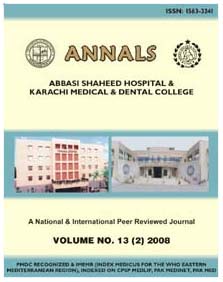
| |
| Home |
| Editorial Staff |
| Instruction to Authors |
| Journal-Issues |
| Policy |
| Copyright |
| ASSESSMENT OF PATTERNS OF PLACENTAL MIGRATION AND ITS EFFECT ON PERIPARTUM COMPLICATIONS
1ZUBAIDA MASOOD, 2ZIAUL HASAN, 1YASMEEN NOMAN ABSTRACT Material & Methods:
The purpose of this study was to determine association between the
patterns of placental migration and the peripartum complications.
It was a comparative cross sectional study at Gynae unit 3 and Radiology
dept, Abbasi Shaheed Hospital, Karachi from September 2008 to June
2011.We evaluated 109 cases of placenta previa, diagnosed by prenatal
anomaly scan performed between 20 and 28 weeks' gestation. They
were followed by sonography at 32 and 36 weeks. Patients were divided
into 3 groups depending on the distance of internal cervical os
from the placenta. Group (1) Placenta overlapping or reaching over
the cervical os (2) 0.1 to 2.9 cm from int. cervical os (3) 3 to
4.9cm from int. cervical os. A pattern of placental migration was
classified as one with acceleration or deceleration of the placental
migration in the late third trimester based on a comparison between
the migration rates at 28 to 32 and 32 to 36 weeks' gestation.
|
For
Full text contact to:
|
1 Department of Obstetrics
& Gyneacology, KMDC & Abbasi Shaheed Hospital, Karachi.
|

Copyright © 2009 Abbbas Shaheed Hospital and Karachi Medical & Dental College.
All rights reserved.
Designed & Developed by: Creative Designers